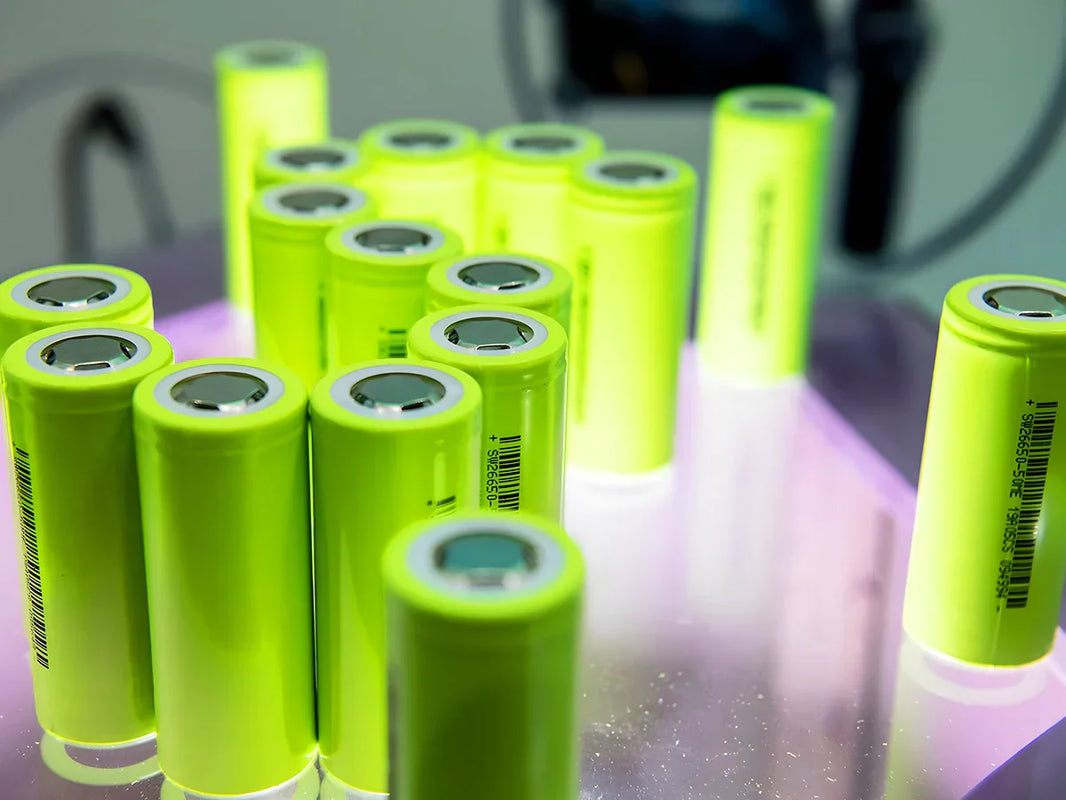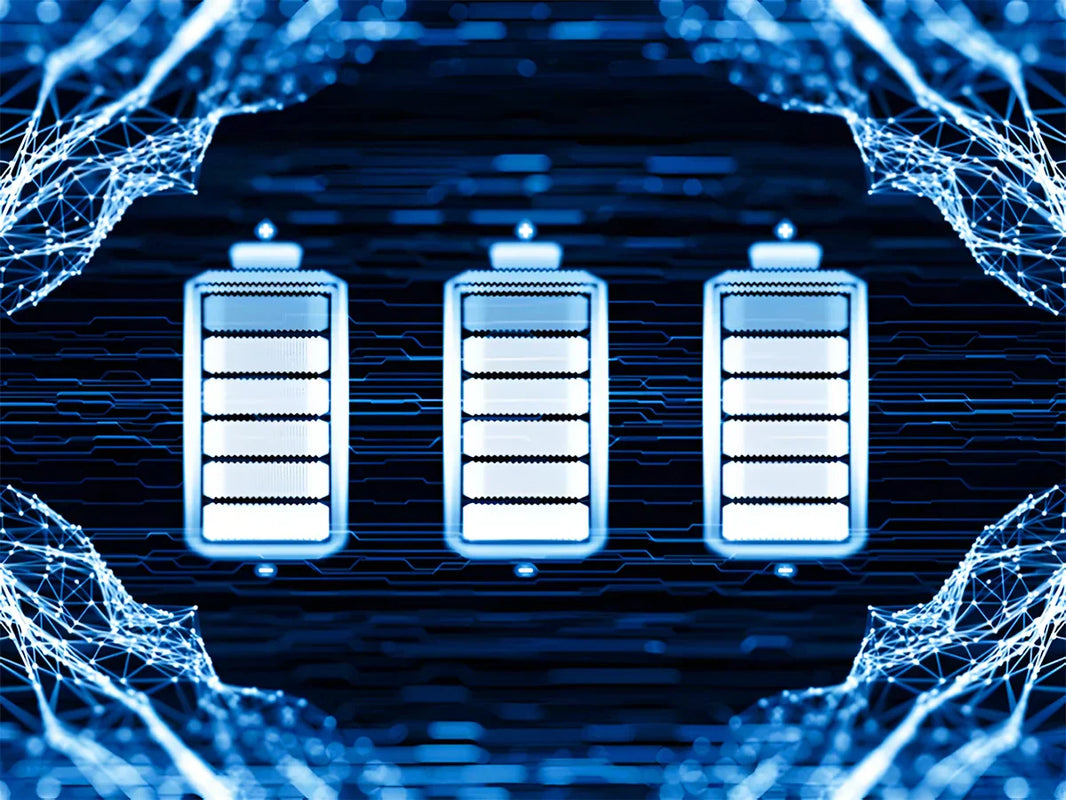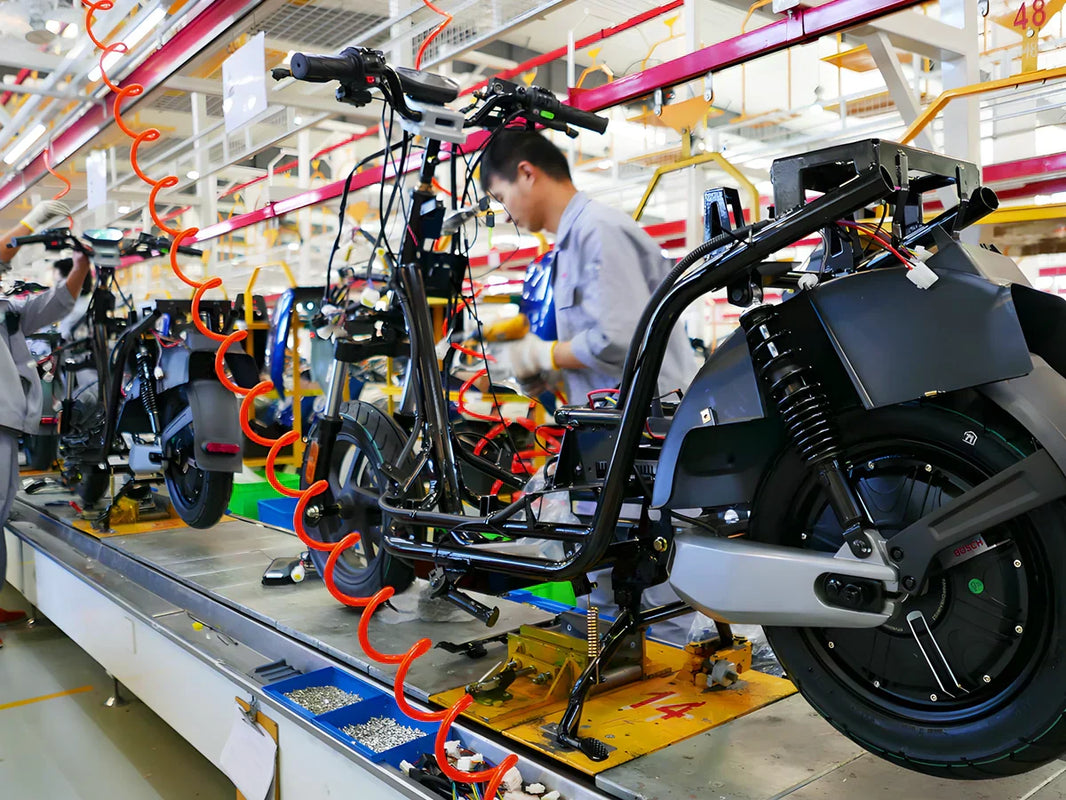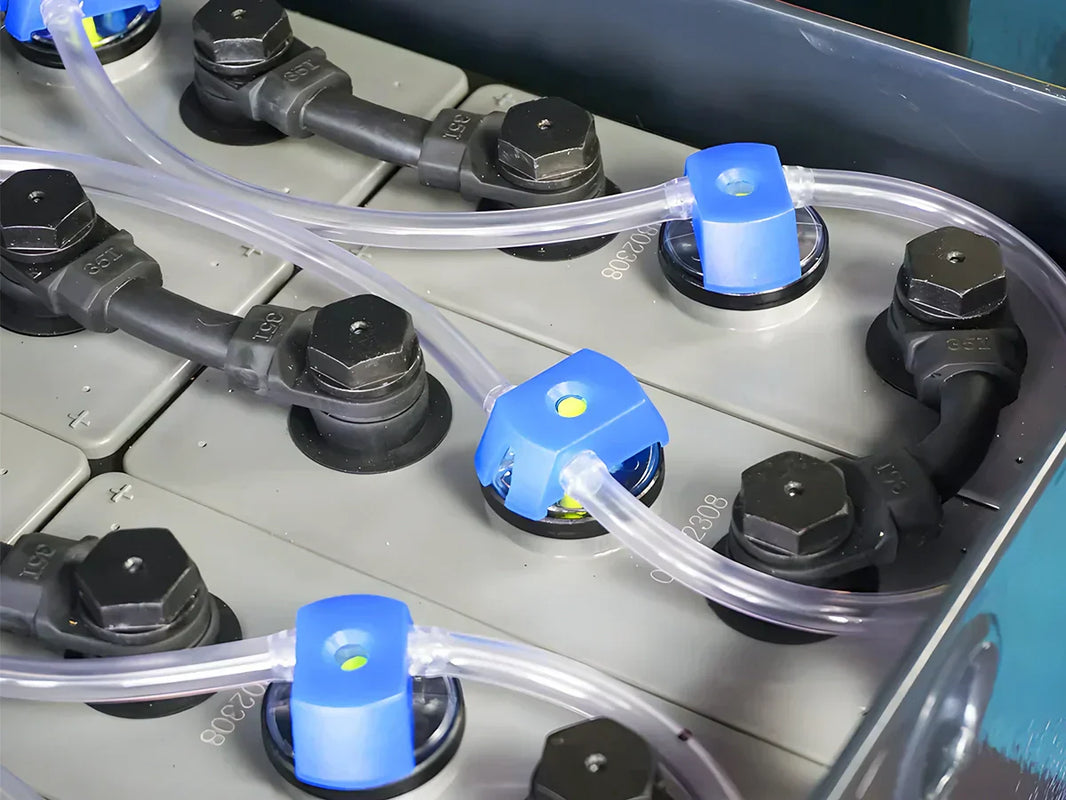
Main content:
- What is resistive load inverter
- What is the resistive load inverter used for
- Which inverter is used for resistive loads
- Application scenario of resistive load inverter
- What type of inverter is more efficient for resistive load
- What is the difference between inductive and resistive load inverter
- Can I connect two different inverters
- FAQs about resistive load inverter
Have you ever experienced power inefficiency with resistive loads? Find out about the best guide on resistive load inverter and enable the smoothness of your power delivery system.
What is resistive load inverter
You can refer to resistive load as a purely resistive component. It operates on the principle of energy conversion and the direct relation between current and power. Resistive load focuses on stability and accuracy. For accurate measurements, you can calibrate it.
In contrast, the resistive load inverter is suitable for resistive load applications. You can define an inverter as a power conditioning device. It comprises semiconductor devices that play a key role in the conversion of direct current into alternating current. The transistor within an inverter switches DC into AC with the help of switching elements ON- OFF repititively.
What is the resistive load inverter used for
Resistive loads are those electrical devices that do not have a phase difference between their current and voltage when connected to a power source and, therefore, do not vary over time. Below are some examples of resistive loads commonly found in homes:- Incandescent Lamps: This type of lamp emits light through a resistance filament, so its main component is the resistor, which is a typical resistive load.
- Electric Stove: Electric stoves generate heat through resistance filaments, again relying on resistance as the main load element.
- Electric water heater: You can use a resistive load inverter for the electric water heater. Its main load element comprises of the heating tube whose resistance depends on both length and diameter.
- Electric ovens: The heating element in an electric oven is also a resistor. Its resistance value depends on the length and diameter of the heating wire. Resistive load inverter serve the key purpose of smooth electric oven operation.

Which inverter is used for resistive loads
Here are the inverters that you can use for resistive loads:
- Pure Sine Wave Inverters:
This inverter is the benchmark for your resistive buddies. They provide a silky, clean AC wave that precisely copies the beat of the grid – ideal for electronics sensitive to electric noise and means always working at top capacity. Think, for example, high-fidelity audio or medical equipment.
- Modified Sine Wave Inverters:
These provide a cost-effective alternative, producing a stepped version of the sine wave. Though not as slick as their pure equivalents, they will happily drive your resistive loads, such as lighting and fan on. Just be careful using them on sensitive electronics or anything with motors. If you want to know the comparison between pure sine wave vs modified sine wave inverter, you can click the link .
- Square Wave Inverters:
These are the most basic and cost-effective inverters that provide only square wave output. They work well with simple resistive loads such as light bulbs, but the coarse output can damage sensitive electronics and lead to inefficiencies in some appliances.
Tips for resistive load inverter choosing guide:When the power-using equipment is a purely resistive load or the power factor is more than 0.9, the rated capacity of the inverter can be selected as 1.1~1.15 times the capacity of the power-using equipment. In the resistive load inverter to more than one device as a load, resistive load inverter capacity selection considers the possibility of several power-using equipment at the same time, i.e., "load at the same time coefficient."
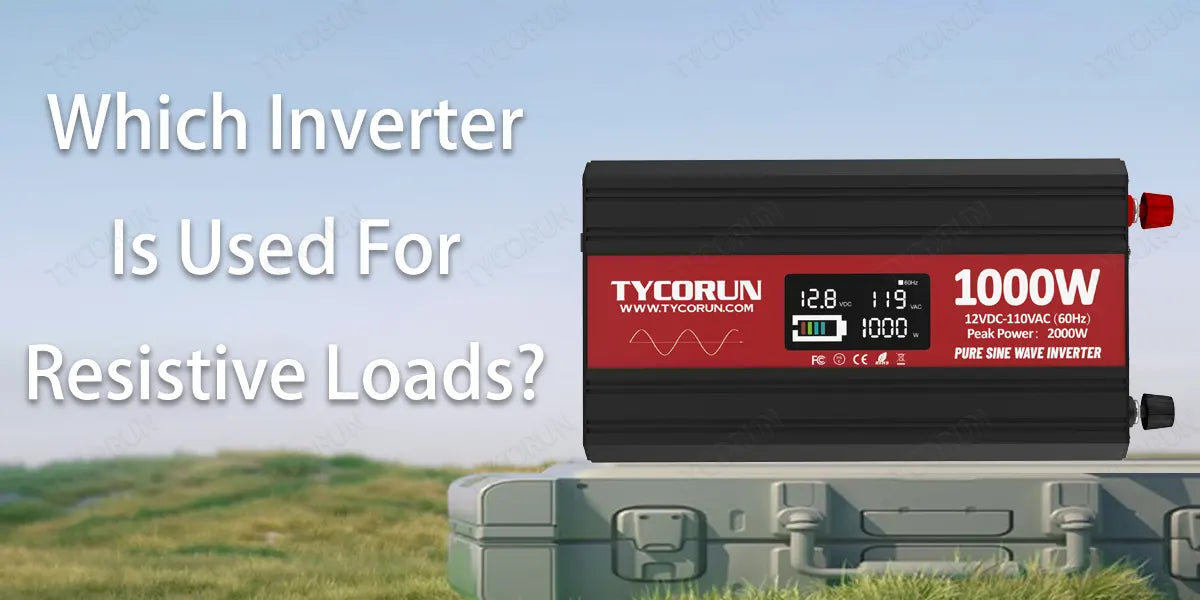
Application scenario of resistive load inverter
Here are some key application scenarios for Resistive load inverters:
- Off-Grid Adventures: Live simply off the grid. The combination of solar panels and a battery bank with a resistive load inverter will provide you with clean energy. Hence minimizing the dependence on traditional power sources while making your life greener at the same time.
- Camping:Connect a laptop or phone to the inverter and watch movies or listen to music under the Milky Way with a simple conversion of small appliances such as coffee makers or mini-fridges. Your campsite becomes an oasis of comfort.
- Garage: Try to imagine the scenario of tinkering with an old car or building a masterpiece in your workshop. Using the resistive load inverter to power your drills, saws, and welders transforms the garage into a new world of activity. Your Resistive load inverter powers your power tools, whether you are building furniture for the garage or carrying out home improvement projects. No more tripping breakers or use of extension cords.
What type of inverter is more efficient for resistive load
A pure sine wave inverter is a relatively common inverter with the advantages of high inversion capacity, high output waveform quality, good stability, etc. It is suitable for the application of actionable loads. This translates to:- Higher efficiency: Your appliances receive the precise power level that they require, reducing energy consumption.
- Longer lifespan: Smoother power means less strain on your electronics, allowing them to last longer.
- Reliable performance: Pure sine wave inverter offers smooth and reliable power and keeps your device running smoothly.
- Low-frequency: These are the workers suitable for heavy-duty appliances such as pumps and motors.
- High-frequency: More compact and portable for laptops, TVs, as well as other sensitive electronic devices.

What is the difference between inductive and resistive load inverter
Consider the differences between the Inducive load inverter and resistive load inverter in the table below:
|
Feature |
Inductive Load Inverter |
Resistive Load Inverter |
|
Inverter waveform |
Pure sine wave |
Square wave/modified sine wave/ pure sine wave |
|
Load type |
Motors, fans, transformers |
Incandescent lights, heaters |
|
Complexity |
Higher (handles lagging current) |
Lower |
|
Efficiency |
Pure sine wave inverters are more efficient than square and modified waves. |
|
|
Cost |
Pure sine wave inverters are more expensive than square and modified wave inverters. |
|
Can I connect two different inverters
Not just any two inverters can be directly connected in parallel. Most conventional inverters cannot be connected in parallel, and the following points need to be taken into account when paralleling today's inverters:- Parameter matching between inverters is critical to ensure an even distribution of output current.
- The system must be able to withstand higher voltages and operating currents, as paralleling means that the loads from all inverters are superimposed on the circuit.
- Line layout and electrical connectivity are also key elements to the success of a parallel system, including maintaining uniformity in line length and cross-section, as well as considering appropriate grounding strategies to ensure system safety and stability.
You need to be careful that the inverter voltage and inverter frequency are the same. Ignoring this factor while connecting two inverters can result in a major loss. As for what is the difference between the different frequencies of a resistive load inverter you can refer to high frequency inverter vs low frequency inverter.
Synchronization IssuesYou can experience synchronization issues if there exists poor communication between two inverters. This results in output power variations resulting in damage to devices.
Safety concerns: Bad connections contribute to disaster. Consider short circuits and fire hazards.
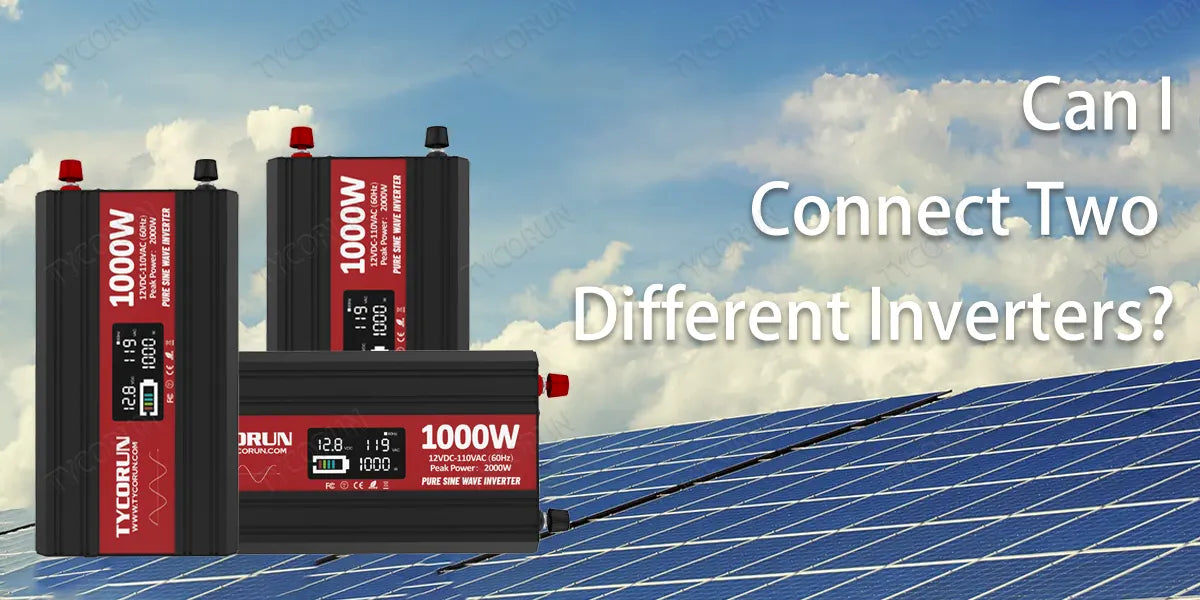
FAQs about resistive load inverter
① What is the best kind of inverter for all common ac loads?
A pure sine wave inverter is the best for all common AC loads for the following reasons:- Offers sharp, clean, and smooth power
- Unmatchable performance
- Noise-free
- Super easy maintenance
- Low weight and Compact
- Maintain voltage safe levels
② How do i choose an inverter for different loads?
Keep in mind the following things to make an informed choice:- Know your load: Know your load type and parameters.
- Size up your options: Choosing the right type of inverter
- Consider the extras: Consider portability, battery compatibility, remote control or even solar charging if they suit your needs.
Summary
In summary, you have unlocked the basic guide to resistive load inverter dealing with power losses. Empower your electrical solutions from understanding their functioning to deciding on an appropriate type for efficient and smooth functionality. Utilize multiple practical applications and achieve the best efficiency possible using pure sine wave inverters.
This will lead you to a better lifespan as well as reliability of your appliances. When choosing between inductive and resistive load inverters, consider the differences identified below to make an informed decision.
Related posts: global top 10 best solar inverter brands, top 10 solar inverters in Australia, top 10 best power inverter companies in Europe



